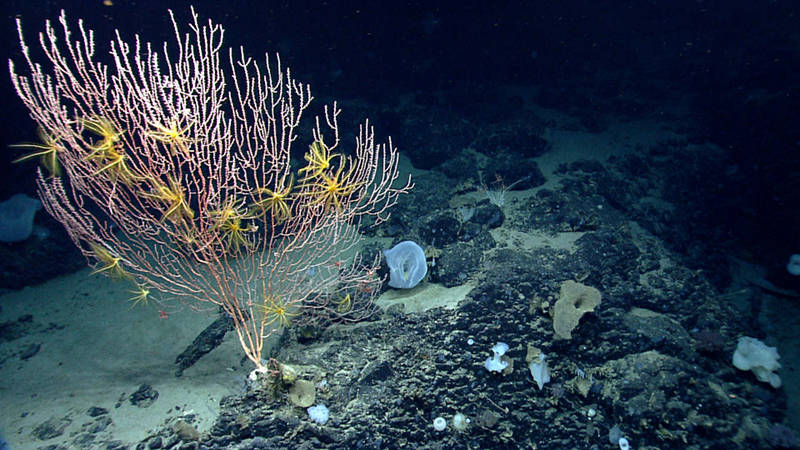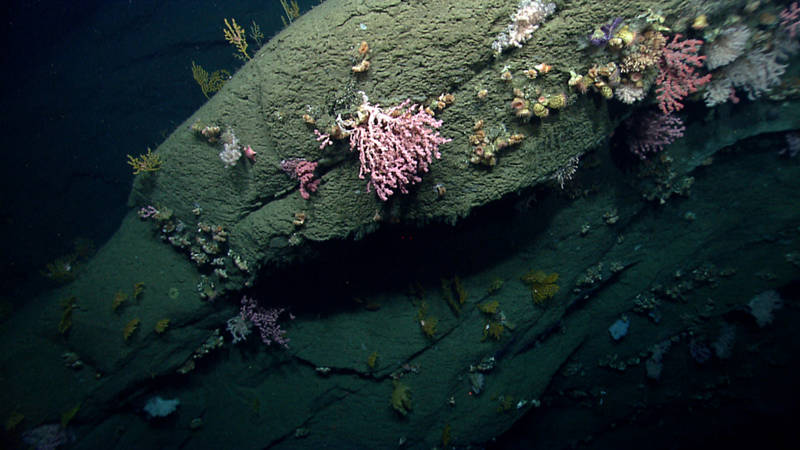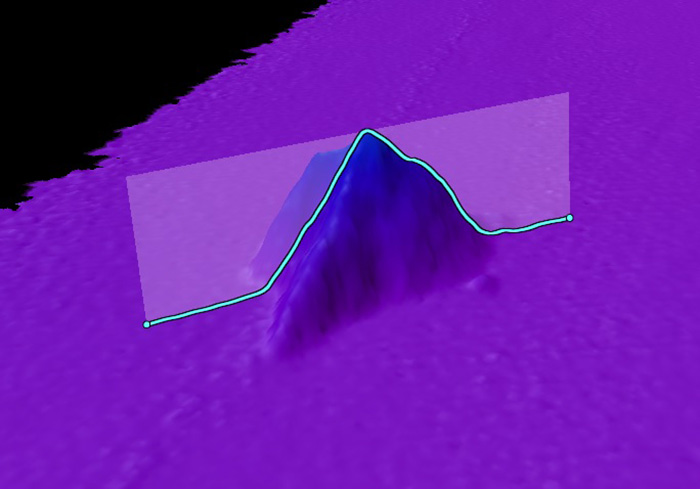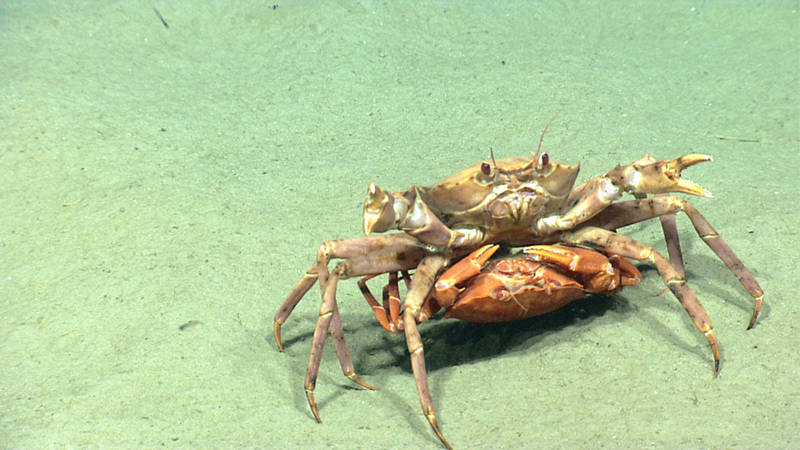
By Brian Kennedy Expedition Manager - NOAA Office of Ocean Exploration and Research

During the Northeast U.S. Canyons Expedition 2013, ROV Deep Discoverer investigated Mytilus Seamount. Corals were diverse on Mytilus Seamount, but the composition and abundance of corals differed between the north and south side of the seamount. We observed this colony of Jasonisis, a bamboo coral, with numerous crinoid associates. NOAA Office of Ocean Exploration and Research. Download larger version (jpg, 1.7 MB).
Close to one of the most urban areas in the U.S. lie diverse deep-sea environments home to deep-sea corals, chemosynthetic communities, and unique geological features. Much of this area—including numerous submarine canyons and the New England Seamount Chain—is unknown and has never been seen by humans. Collecting data here is critical not only to our understanding of our nation’s submerged resources but also for resource managers, who need accurate baseline information to make informed decisions.

Diverse deep-sea coral and sponge habitats were imaged in the canyons explored during the Northeast U.S. Canyons Expedition 2013. In this image from Hydrographer Canyon, a rock face is shown with a diversity of octocorals (soft corals and sea fans) and cup corals. NOAA Office of Ocean Exploration and Research. Download larger version (jpg, 1.4 MB).
During August, September, and October 2014, NOAA Ship Okeanos Explorer will work with the ocean science community to systematically explore the U.S. Submarine Canyons and New England Seamount Chain. This three-leg expedition will collect critical data for the science and management communities. We will survey physical and oceanographic features to further our understanding of the diverse geology and oceanography of the region.
Submarine canyons are dominant features of the outer continental shelf and slope of the U.S. East Coast, extending from Cape Hatteras, North Carolina, about 450 miles north to the Gulf of Maine. Located within 100 miles of the densely populated Mid-Atlantic and New England regions, hundreds of these canyons link the continental shelf to the deep sea, acting as conduits that funnel pollutants, organic carbon, and sediments from shallow to deeper waters. Over the last few years, these canyons have been shown to host a diversity of fauna, including commercially important fish, deep-sea corals, and chemosynthetic communities.

The New England Seamount Chain is one of Earth’s many unexplored and poorly known ocean features. During the 2013 exploration of the New England Seamount Chain, Okeanos Explorer discovered a previously unknown seamount. NOAA Office of Ocean Exploration and Research. Download image (jpg, 59 KB).
The New England Seamount Chain is one of Earth’s many unexplored and poorly known ocean features. During the 2013 exploration of the New England Seamount Chain, Okeanos Explorer discovered a previously unknown seamount. Click image for credit and larger view.

One of the numerous commercially important Atlantic deep-sea red crab mating pairs seen by ROV Deep Discoverer during the 2013 Northeast U.S. Canyons Expedition. The male crab is carrying the inverted female. NOAA Office of Ocean Exploration and Research. Download larger version (jpg, 1.6 MB).
This expedition provides extensive opportunities for the public to connect to the mission. The web pages for this expedition include background content; mission logs; daily updates; videos and images; near real-time ship tracking features; and a live feed over the Internet.
Educators and students can engage their classrooms through the Expedition Educational Module, which provides access to products tied to the expedition, including standards-based lesson plans, background information, ocean career connections, links to previous Office of Ocean Exploration and Research-sponsored expeditions, and more.